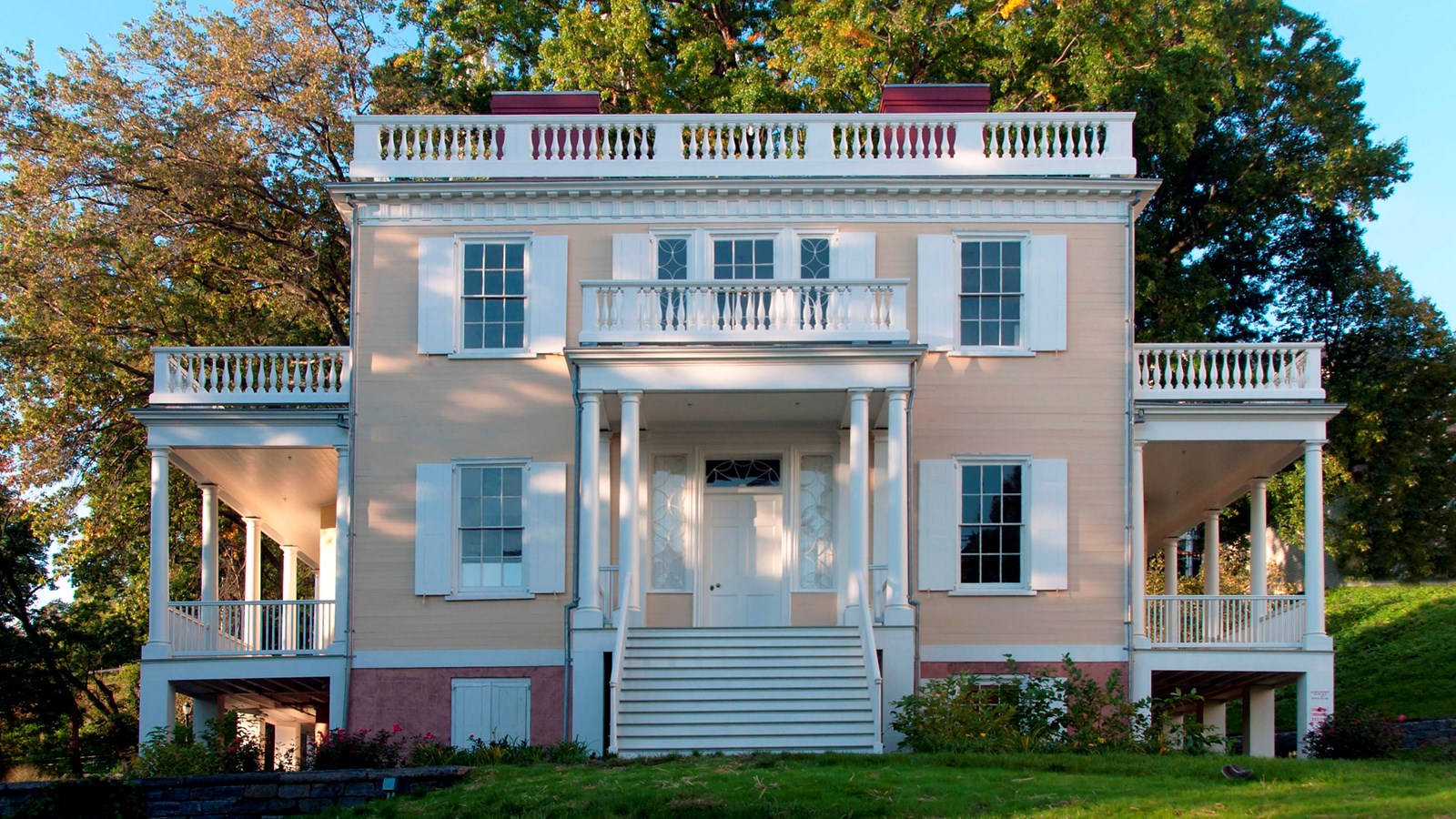Last updated: December 5, 2021
Place
Hamilton Grange Architecture

NPS photo
Hamilton may have never imagined that in the 21st century, his home would be surrounded by tall buildings, and that you'd be visiting his home with a device in your hand, that can take something called a picture, and send that picture to anyone in the world, instantly. The world around The Grange may have changed, but this structure is a faithful call-back to the past.
Federal Style
The Grange was designed in the Federal style by architect John McComb, Jr., which was prominent in the United States between the 1780s and c.1830s. The Grange’s design reflected themes of balance and symmetry and was less ornate than previous architectural styles.
In order to get a better grasp on the symmetry of this structure, take a walk around the house and try to answer the question, "what elements are symmetrical on this house?" Look for windows, doors, porches, stairways, shutters, balustrades, and more. By walking around the house, you will notice four chimneys standing above the house. You may be surprised to learn that two of these chimneys are fake! They were constructed with the house in order to maintain the symmetrical theme.
What is original?
On this home, many of the features are original, including the siding, windowpanes, doors, chimneys, and balustrades. However, extensive renovations are required to keep the home in good condition. Therefore, the porches, stairs, roof, shutters, and many other small features have been replaced throughout the years. Because the home has also been moved twice, the foundation is also new as of 2008.
A Changing Neigborhood
Look around you. Beyond the borders of St. Nicholas park is a bustling city. Cars, trucks, trains and planes whiz by Hamilton Grange National Memorial all day. The soundscape of Hamilton Grange National Memorial is therefore changed. Standing here, you cannot deny that you are in the 21st century.
But, at the time of the home’s construction, Harlem was the countryside, and the Grange was built on a hill. For a moment, imagine that the sounds of the 21st century fade away, and instead, you can hear birdsong, the babbling of brooks, the rustling of leaves, and the sound of a wagon on a dirt path. If you scanned the distance, you can see the Hudson and the Harlem rivers. Bucolic hills rolled into the distance... This is the uptown that Hamilton knew.
Hamilton and his family used this home primarily in the warmer months, when the threat of transmissible illness was high in the bustling downtown of Manhattan. Hamilton's enjoyment of this home was cut short in 1804, when the fateful duel with Burr would lead Hamilton to his untimely death. However, Eliza would continue to occupy The Grange until 1833, when she sold it and moved to Washington, DC, with her daughter.
Hamilton used the home until his untimely death in a duel in 1804. After Hamilton's passing, his friends created a secret fund that assisted Eliza in keeping The Grange. In 1833, however, Eliza moved to Washington D.C. and sold the home. In the years that followed, the building had several owners and was physically moved twice to adapt to the demands of the changing city. It has been used as a private residence, church, museum, and national memorial!
